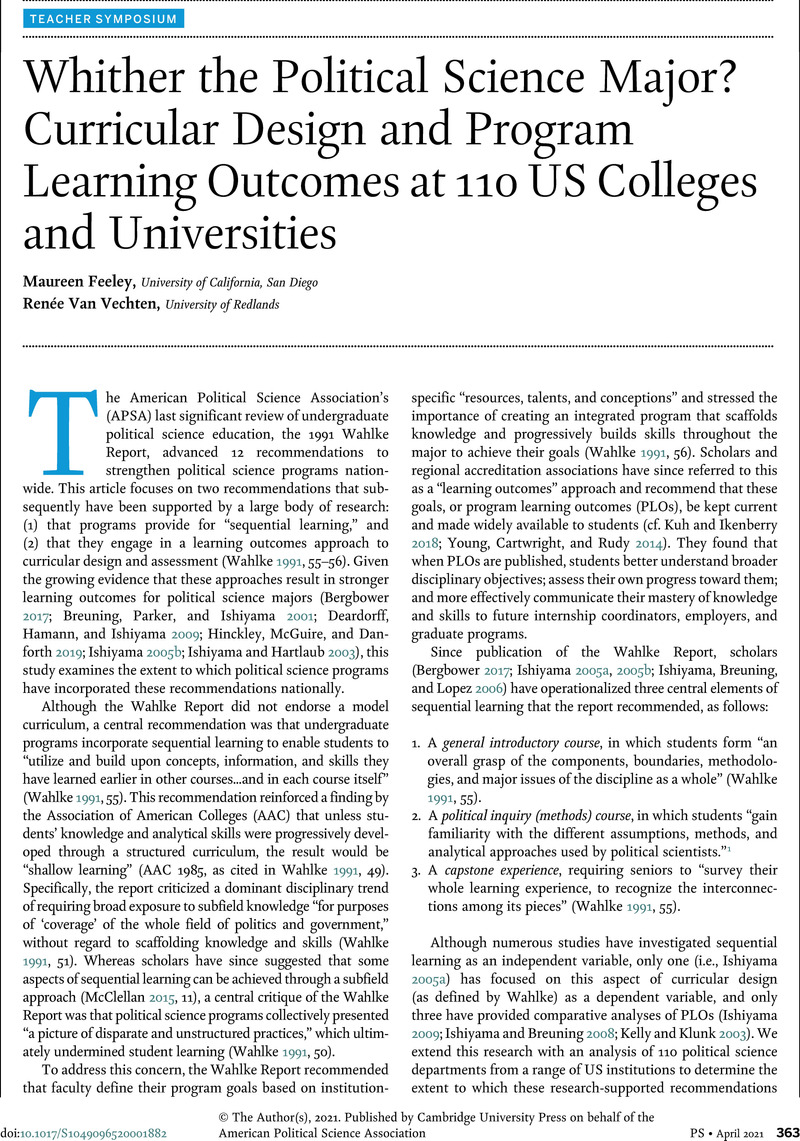Crossref Citations
This article has been cited by the following publications. This list is generated based on data provided by Crossref.
McClellan, E. Fletcher
Kopko, Kyle C.
and
Hafler, Amanda
2023.
Giving It the Old College Try: Academic Departments and Undergraduate Curriculum Change in Political Science, 2009–2019.
Journal of Political Science Education,
Vol. 19,
Issue. 4,
p.
580.
Pham, Huong Thi
and
Nguyen, Phuong Vu
2024.
ASEAN quality assurance scheme and Vietnamese higher education: a shift to outcomes-based education?.
Quality in Higher Education,
Vol. 30,
Issue. 2,
p.
285.
Best, Eric
and
Mallinson, Daniel J.
2024.
Quantitative Political Science Education in the Past and Future.
Journal of Political Science Education,
Vol. 20,
Issue. 4,
p.
637.
Plencner, Joshua
and
Rank, Allison
2024.
Curricular Design, American Political Development, and the Future of the Undergraduate Political Science Major.
Journal of Political Science Education,
p.
1.



